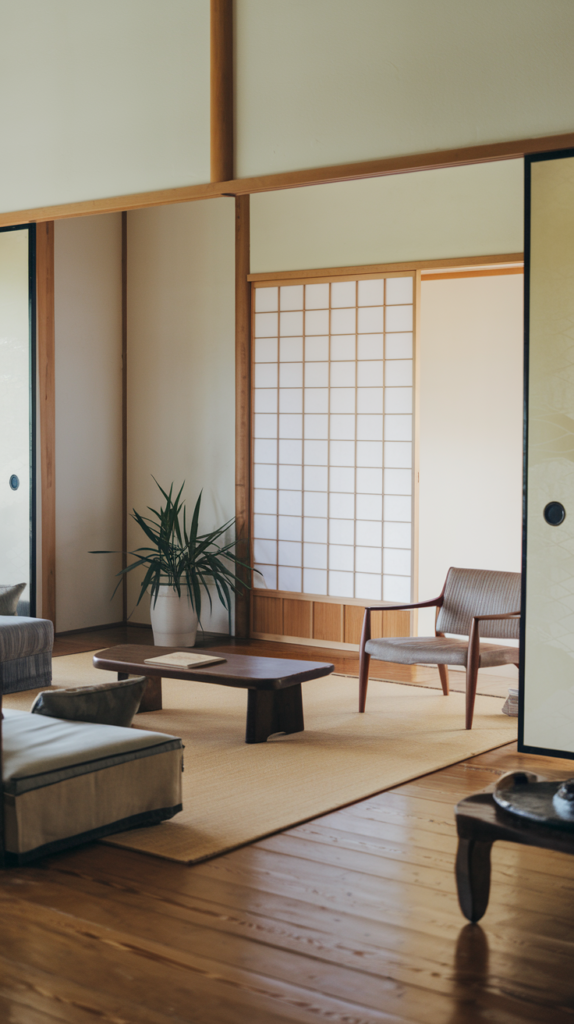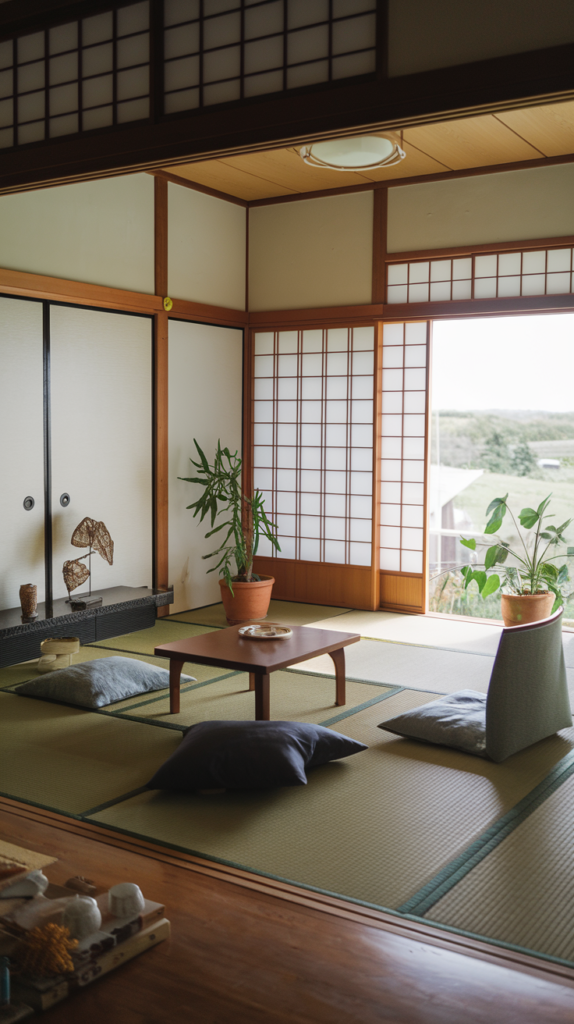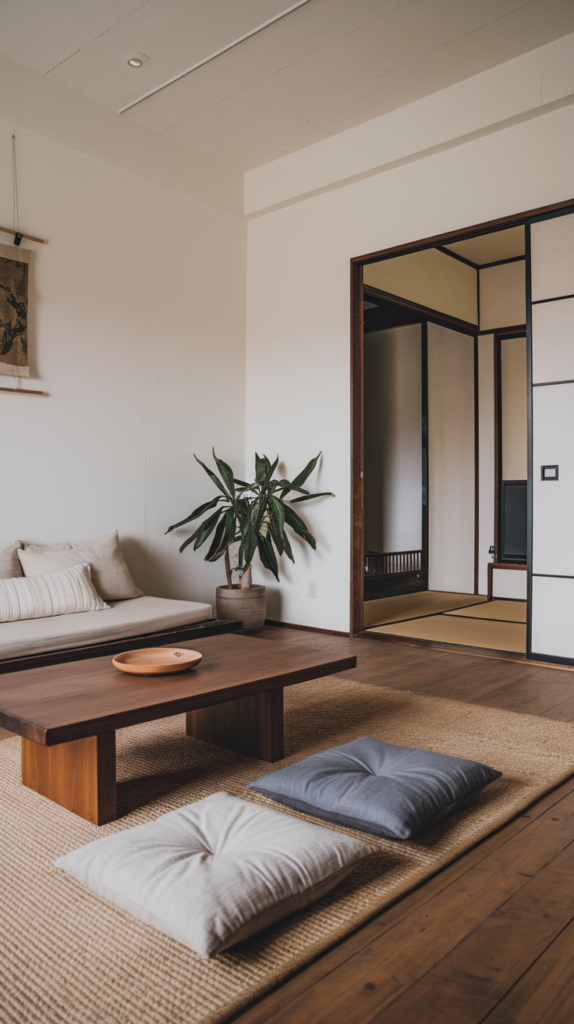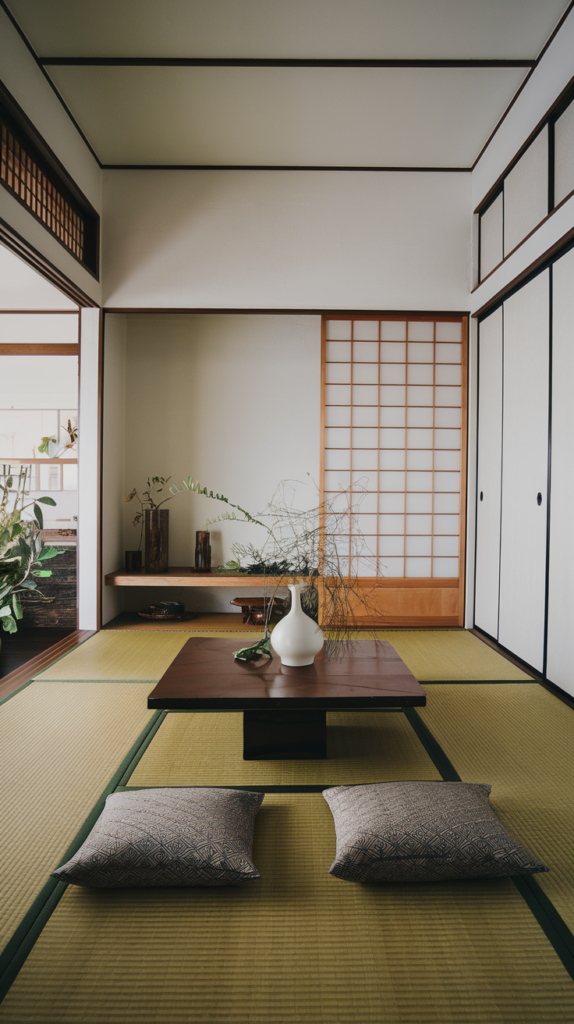11 Japanese Living Room Ideas for a Minimalist and Tranquil Space
Creating a Japanese living room is about embracing simplicity, tranquility, and natural beauty. These spaces often reflect a deep connection with nature, minimalistic design principles, and a calming atmosphere. Whether you’re in a small apartment or a modern home, here are 11 Japanese living room ideas that embody these ideals.
1. Embrace Natural Materials
Incorporating natural materials is essential for a Japanese-inspired living room. Use elements like wood, bamboo, and stone to create a grounded, organic feel. Opt for furniture pieces made from reclaimed wood or bamboo to enhance the minimalist aesthetic. Natural fibers, such as cotton or linen, for cushions and throws can also add a soft touch while remaining true to the Japanese design ethos.
| Material Type | Examples | Benefits |
|---|---|---|
| Wood | Reclaimed wood furniture | Warmth, durability |
| Bamboo | Bamboo blinds, screens | Lightweight, sustainable |
| Stone | Stone coffee table, accents | Timeless, grounding |
| Natural Fibers | Cotton cushions, linen throws | Soft, breathable |
2. Opt for Neutral Color Palettes
A neutral color palette is vital for achieving a serene atmosphere. Shades of beige, taupe, and soft greys create a blank canvas that promotes relaxation. Use these colors for your walls and larger furniture pieces. You can then incorporate splashes of earthy tones through accessories like cushions or artwork, maintaining a calm yet inviting space.
Suggested Color Combinations:
- Beige walls with brown furniture
- Light grey cushions with green plant accents
- Soft white curtains with terracotta decor items
3. Utilize Shoji Screens
Shoji screens are traditional Japanese sliding doors made of wood and paper. These can act as stylish room dividers, creating privacy while allowing light to filter through. This element is especially useful in small living spaces where you want to maximize light and openness. Choose screens with a minimalist design that blends seamlessly into your living room.
4. Incorporate Zen Elements
Incorporating zen elements can transform your living room into a tranquil retreat. Consider adding a zen garden, which typically consists of sand, stones, and minimalistic plants. This can be placed on a coffee table or in a corner of the room to promote mindfulness and tranquility.
Zen Garden Ideas:
- Use raked sand for texture
- Incorporate small stones for balance
- Add a few succulent plants for life
5. Choose Multi-Functional Furniture
In small Japanese-inspired living rooms, multi-functional furniture is key. Look for pieces that can serve multiple purposes, such as a ottoman that doubles as storage or a coffee table that can convert into a dining table. This approach not only saves space but also aligns with the minimalist philosophy of using only what is necessary.
| Furniture Type | Function 1 | Function 2 |
|---|---|---|
| Ottoman | Seating | Storage |
| Coffee Table | Table | Dining surface |
| Sofa Bed | Seating | Sleeping area |
6. Create an Indoor-Outdoor Connection
Bringing the outdoors in is a fundamental principle in Japanese design. Use large windows or glass doors to connect your living room with an outdoor space. Incorporate plants, such as bonsai or bamboo, to enhance this connection. A small balcony garden or a view of a landscaped area can also add to the tranquil ambiance.
Plant Suggestions for Indoor Spaces:
- Bamboo for height
- Ferns for lushness
- Japanese maple for color
7. Incorporate Japanese Textiles
Japanese textiles can add warmth and comfort to your living room. Use tatami mats for flooring, which not only provide a unique aesthetic but also enhance comfort. Additionally, consider traditional kimono fabrics for throw pillows or wall hangings to infuse a touch of culture.
Textile Ideas:
- Tatami mats as flooring
- Kimono-inspired cushions for seating
- Silk curtains for an elegant touch
8. Minimalist Artwork and Decor
When it comes to decor, opt for minimalist artwork that reflects Japanese aesthetics. Look for ink paintings, calligraphy, or nature-inspired pieces. Limit the number of decor items to maintain a clutter-free environment, focusing on quality over quantity. A single large piece can often have more impact than several smaller ones.
Suggested Art Styles:
- Sumi-e (Japanese ink painting)
- Kintsugi (art of repairing pottery with gold)
- Nature photography showcasing serene landscapes
9. Mindful Lighting Choices
Lighting plays a crucial role in setting the mood in your living room. Choose soft, warm lighting that mimics natural light. Use paper lanterns or rice paper lamps to diffuse light gently throughout the space. Dimmer switches can also be a great addition, allowing you to adjust the brightness according to the time of day and your mood.
Lighting Options:
- Paper lanterns for ambiance
- LED strip lights for subtle highlighting
- Floor lamps with soft fabric shades
10. Integrate Low Furniture Arrangements
Low furniture arrangements are a staple in traditional Japanese living spaces. Use low-profile sofas and low coffee tables to create a sense of openness and harmony. This style encourages relaxation and fosters a more intimate gathering space, perfect for both family and guests.
Low Furniture Ideas:
- Tatami seating for traditional flair
- Low sofas for modern aesthetics
- Coffee tables that sit just above the ground
11. Incorporate Japanese Living Room Accessories
Lastly, consider accessorizing your space with Japanese living room accessories. Simple items like ceramic vases, incense holders, or traditional tea sets can enhance the overall aesthetic without overwhelming the space. Choose accessories that are functional and reflect the philosophy of simplicity and beauty.
Accessory Suggestions:
- Ceramic vases for floral arrangements
- Incense burners for a calming aroma
- Tea sets for both decor and utility
By implementing these 11 Japanese living room ideas, you can create a space that is not only beautiful but also functional and serene. Embrace minimalism and tranquility through natural materials, thoughtful furniture arrangements, and mindful decor choices, all while reflecting the essence of Japanese design principles. Whether your living room is large or small, these concepts will help you craft a peaceful retreat that invites relaxation and harmony into your daily life.



